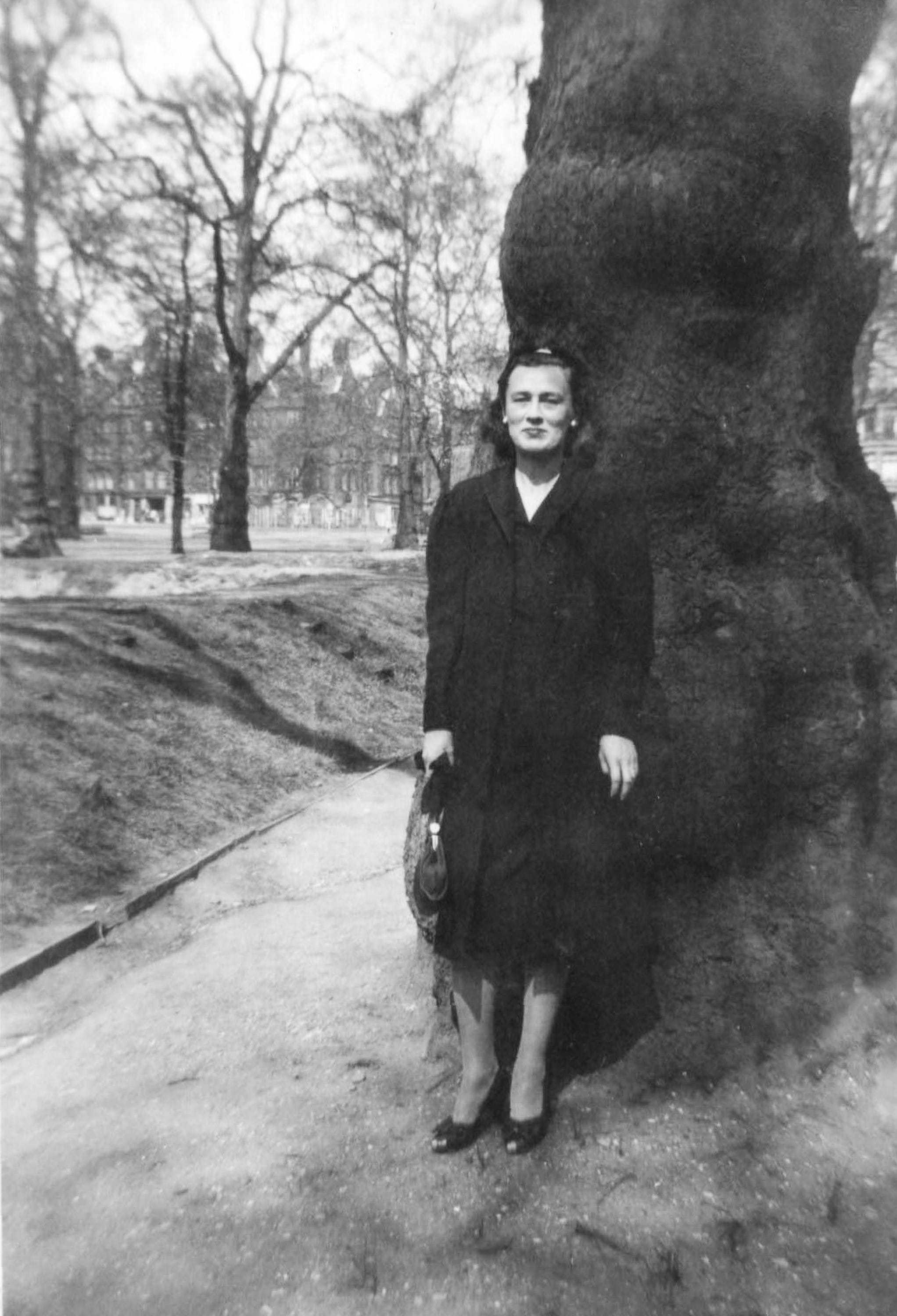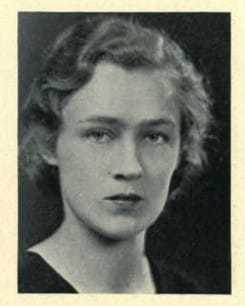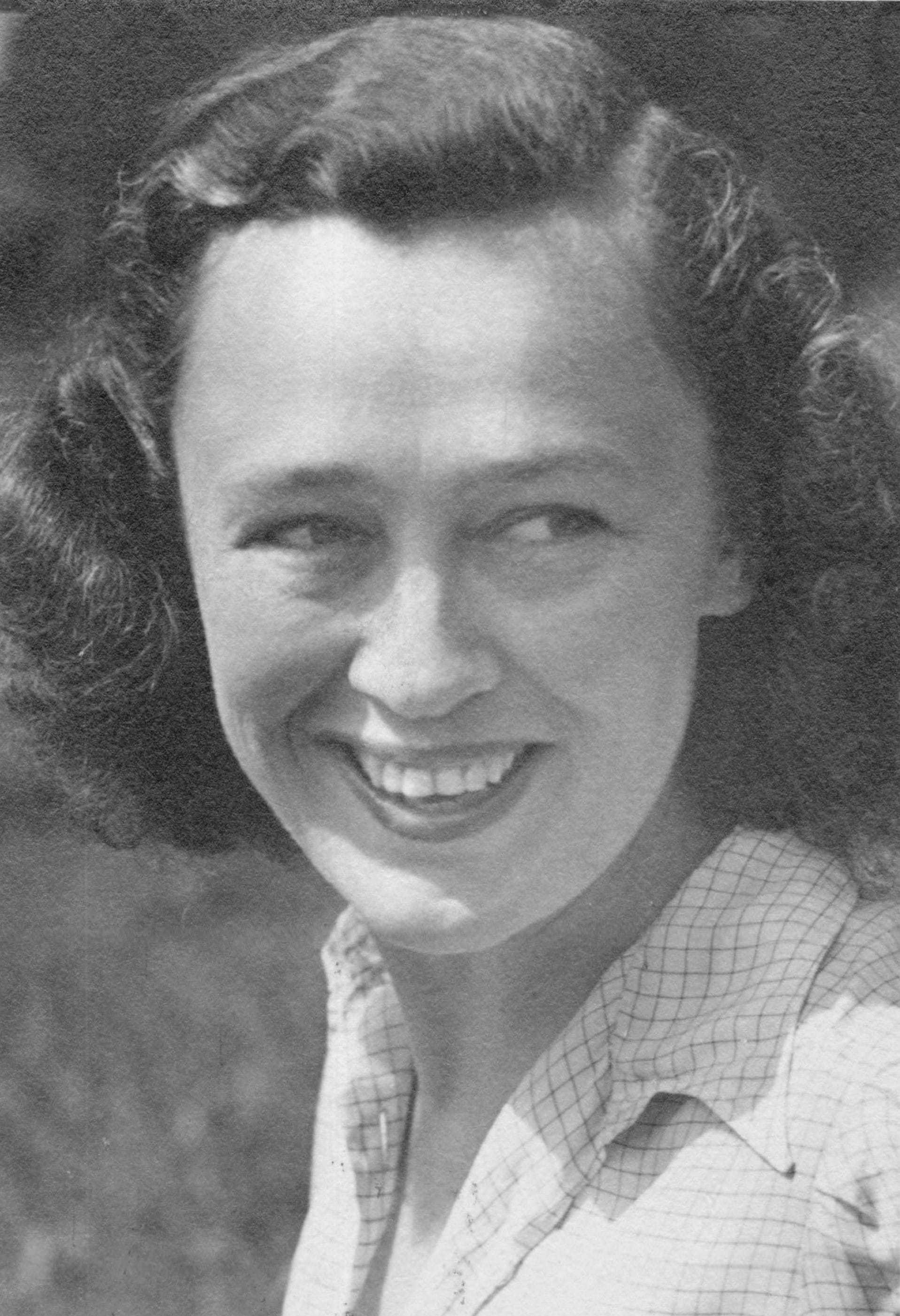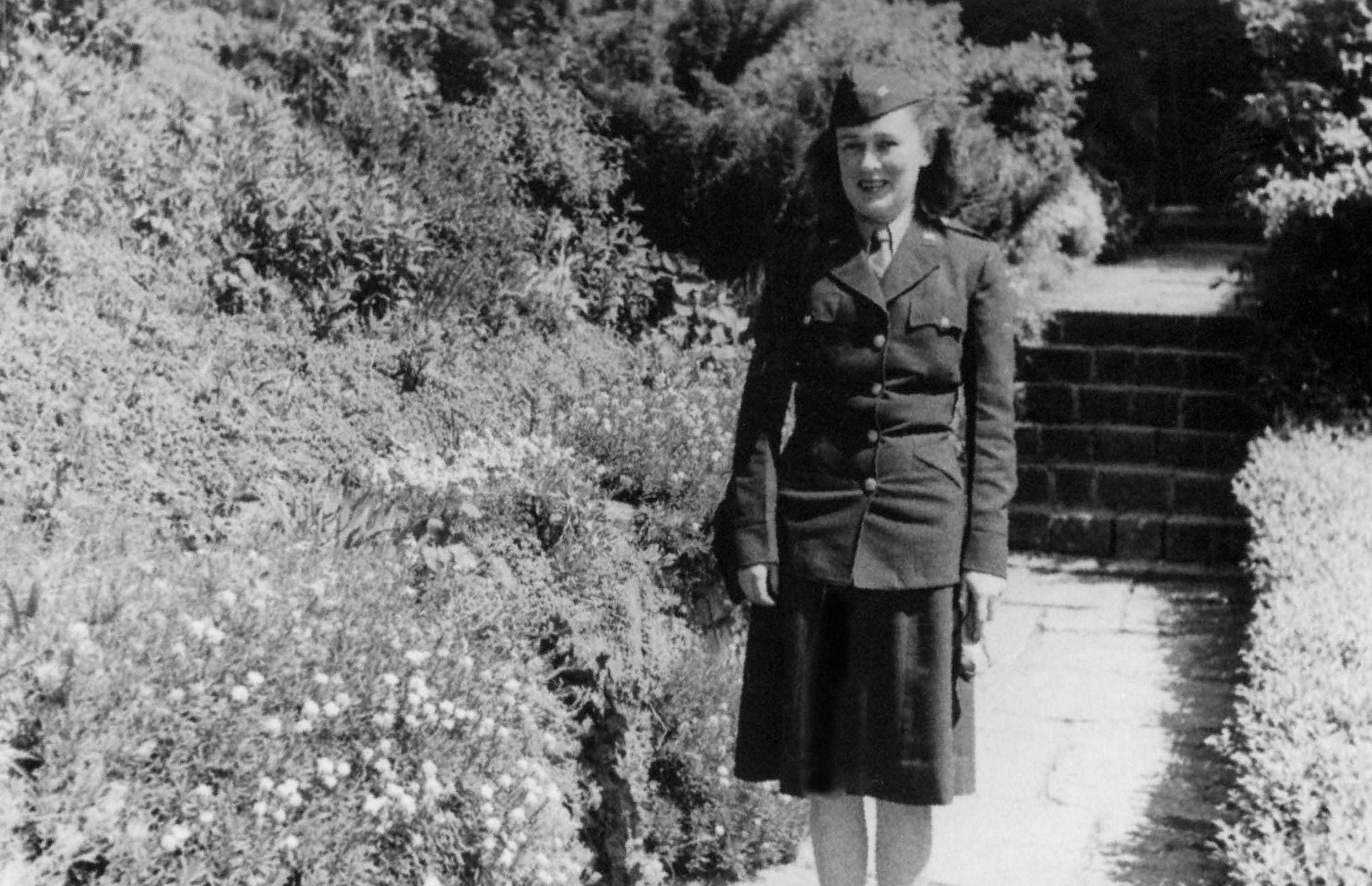
On January 6, 1948, an Air France DC-3 from Brussels crashed on approach to the Le Bourget airport near Paris, killing all five crew members and 10 of the 11 passengers. Among the dead was a young woman who, press reports said, was either a clerk or a courier. She was neither. Jane Burrell was a CIA officer, and her death—only 110 days after CIA was officially established the previous September—makes her the first CIA officer to die while employed by the Agency.
At a time when most women in US intelligence were “clerk-typists,” Jane Burrell was a CIA counterintelligence (CI) officer and had served as one in all of CIA’s predecessor agencies: the Office of Strategic Services (OSS), the Strategic Services Unit (SSU), and the Central Intelligence Group (CIG).
Family Background
Jane Burrell came from a literary family. Born Jane O’Neil Wallis in 1911 in Dubuque, Iowa, she was the oldest of three children. Her father, James H. Wallis, was a Yale graduate who became a newspaper editor, local politician, and successful writer. After World War I, he worked in Europe with Herbert Hoover’s American Relief Association. In 1921, the family relocated to Washington, DC, where James Wallis served as an assistant and speechwriter to Secretary of Commerce Hoover. In 1929, Jane graduated high school at the Holton-Arms School (the all-girls school, now in Bethesda, Maryland, was then located in Washington). The Holton-Arms motto probably appealed to her: Inveniam viam aut faciam — “I will find a way or make one.”

The way that Jane entered into US intelligence and eventually into CIA was through her intellectual ability combined with her mastery of the French language. A French major at Smith College in Massachusetts (and president of the college’s French Club), she deepened her knowledge of French culture through study abroad programs in Montreal, Grenoble, and at the Sorbonne in Paris. She spent her entire junior year in France and also traveled in Italy, Spain, and Germany. After graduating in 1933, Jane Wallis married David Burrell, a recent Yale graduate, and for most of the next 10 years they lived in upstate New York, where David worked for his family’s dairy machine business. In 1936-1937, Jane continued her French language and English literature studies at Columbia University in New York City.
After the United States entered World War II, David Burrell joined the Navy and was assigned to the Naval Reserve Aviation Base in Anacostia, so he and Jane moved to Washington. Jane applied to the OSS and began working at OSS Headquarters in March 1943. Soon after, Jane and her husband parted ways: the Navy sent David to the South Pacific, and in late 1943 Jane was posted to OSS in London, with further assignments in France and Germany. The Burrells separated a few years later (in January 1946)—apparently because David wished to return to his family’s business, while Jane wanted to remain with US intelligence.
Life at OSS
Despite her college degree and overseas experience, Jane was hired by OSS as a junior clerk—a common experience for women in those days—at an annual salary of $1,440. Her work, however, was that of an analyst. She was assigned to the reference library for the OSS Research and Analysis (R&A) branch, working in the Pictorial Records Section, which processed photographs by identifying them and deriving intelligence from them.
After Jane’s death, Murphy wrote a letter to her father, expressing sympathy and explaining “I originally recruited Jane for work during the war and she worked in the branch of O.S.S. activity for which I was responsible. I saw her often when she was in Washington and on trips abroad and greatly admired her and her abilities.”
Jane’s work as an R&A analyst and her French language skills resulted in quick promotion and evidently brought her to the attention of James R. Murphy, the new chief of OSS Counterintelligence. Murphy had a habit of spotting capable young people with proficiency in West European languages (for example, James Angleton) and recruiting them into CI. Murphy had a particular interest in recruiting women, who were considered good candidates because of their presumed attention to detail—a crucial skill in CI work. In early 1944, Murphy’s CI branch acquired a new and somewhat romantic designation, X-2.
Though we know Jane ended up in X-2, documents from her OSS service are not clear when she made the transition and what her work involved. Personnel documentation often presents ambiguities and even contradictions. We do know that Jane arrived in London in December 1943 and, depending on the record, worked there either for R&A or X-2. What is certain is that she was working for X-2 in France in mid-1944, after the Normandy invasion. Jane’s work, according to her OSS Theater Service Record, was as an X-2 “Case Officer.”

In counterintelligence work, conducting investigations and maintaining CI cases, a lot of paperwork and record-keeping are required, but it’s not all desk work. A civilian woman in an occupation dominated by US military men, Jane was engaged in important CI field work, especially after she was assigned in May 1945 to an OSS Special Counterintelligence (SCI) team under the 6th US Army Group. These SCI teams, each comprising about a dozen personnel (military and civilian), were mobile X-2 field units patterned after similarly named British MI6 counterespionage units that operated in North Africa and Sicily. Like their British counterparts, American SCI units collected intelligence, discovered enemy agents (including assassins, saboteurs, and other “stay behinds”), interrogated sources, and also ran agents, including doubled enemy agents, against the Germans. The few surviving documents mentioning her indicate that Jane was in the thick of these activities, with frequent official travel during 1945 to various cities in France and Germany.
From OSS to SSU to CIG to CIA
When OSS was dissolved in October 1945, only one in three overseas X-2 officers were retained in the new successor organization, the Strategic Services Unit (SSU) of the War Department. Jane’s OSS work was evidently considered important enough that her employment with US intelligence survived the massive post-war downsizing, and she continued to serve with SSU in France. Jane’s service history indicates she was working on German cases, though in what capacity we do not know.

Jane returned to Washington in November 1945 and continued her work with SSU’s X-2 branch while she prepared for her next foreign assignment. On May 6, 1946, Jane attended a one-day SSU Indoctrination Course; she was one of 10 X-2 personnel among the 25 students in the course. Shortly thereafter, she was promoted to P-2 (professional service level two); her annual salary of $2,980 was more than twice her initial OSS salary of three years before. Jane returned to France in July 1946.
In October 1946, SSU was subsumed into the Central Intelligence Group (CIG), which President Truman had created by Executive Order the previous January. As with the transition from OSS to SSU, continued employment with CIG was by no means automatic—only about 40 percent of SSU’s overseas personnel were retained—but Jane was among those high-performing SSU officers who continued with CIG. When the National Security Act of 1947 transformed CIG into CIA in September 1947, Jane became an original member of CIA and continued to serve as a valued intelligence officer.
Death and Aftermath
We know nothing about Jane’s activity at the time of her death. She was returning from a trip to Brussels on January 6—traditionally the end of the Christmas season—and despite speculation that she was on an operational mission, the limited documentation sheds no light. An official US spokesman at the time said Jane had been on vacation.

Jane was never a candidate for a Star on CIA’s Memorial Wall because the Wall commemorates Agency employees who died in specific circumstances, and deaths from crashes of commercial aircraft have generally not qualified. At the same time, her service with CIA and its predecessor organizations was honorable and deserves to be remembered.
After Jane’s death, her parents established the Jane O’Neil Wallis Memorial Scholarship fund at Smith College to enable selected Smith students to spend their junior year in France. The scholarship still exists and is going strong; Jane’s niece is informed every year of the Smith student who is able to study in France, just as Jane had done more than 80 years ago.

